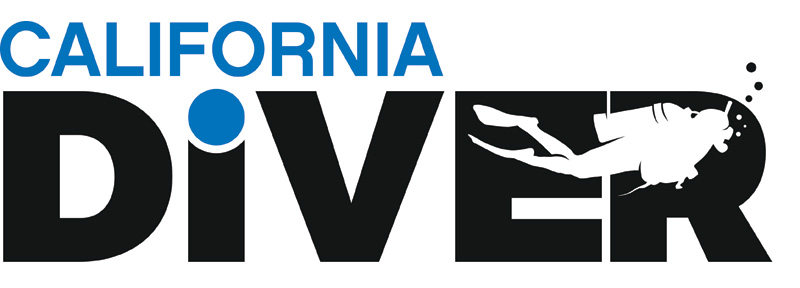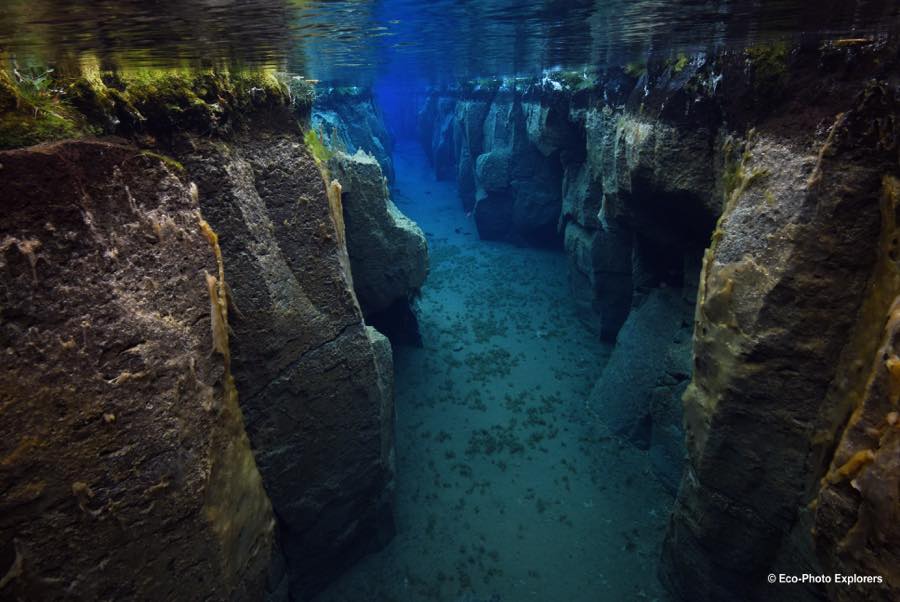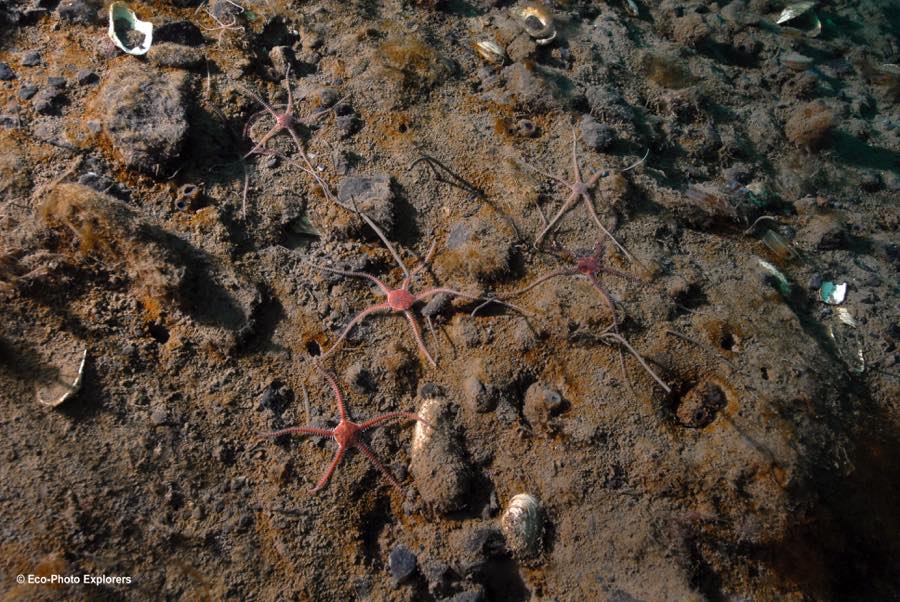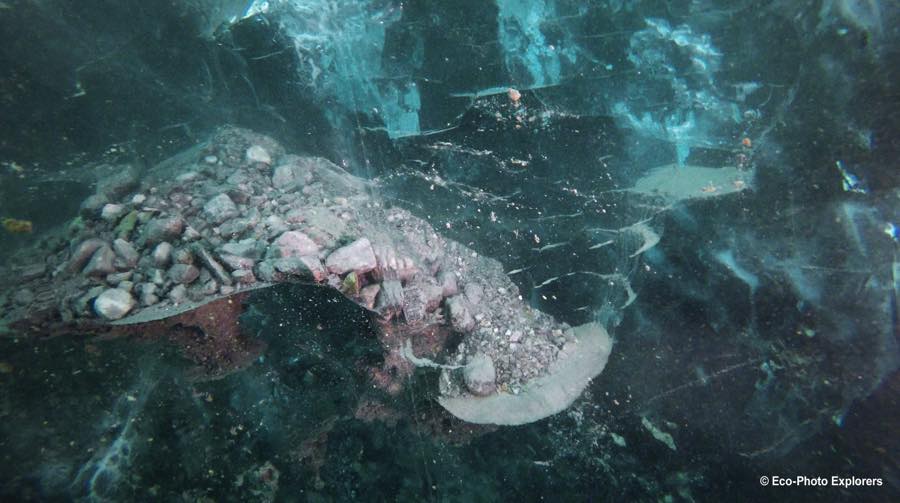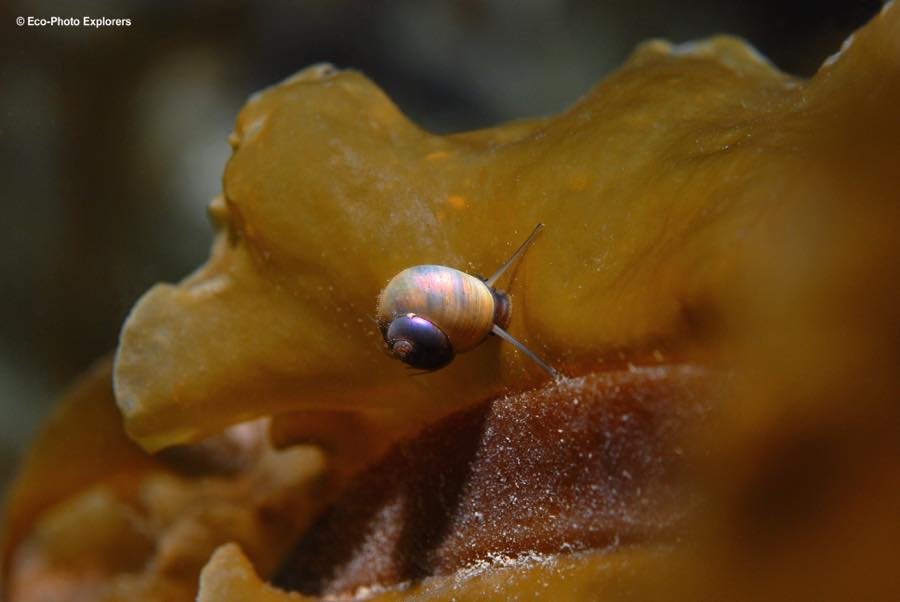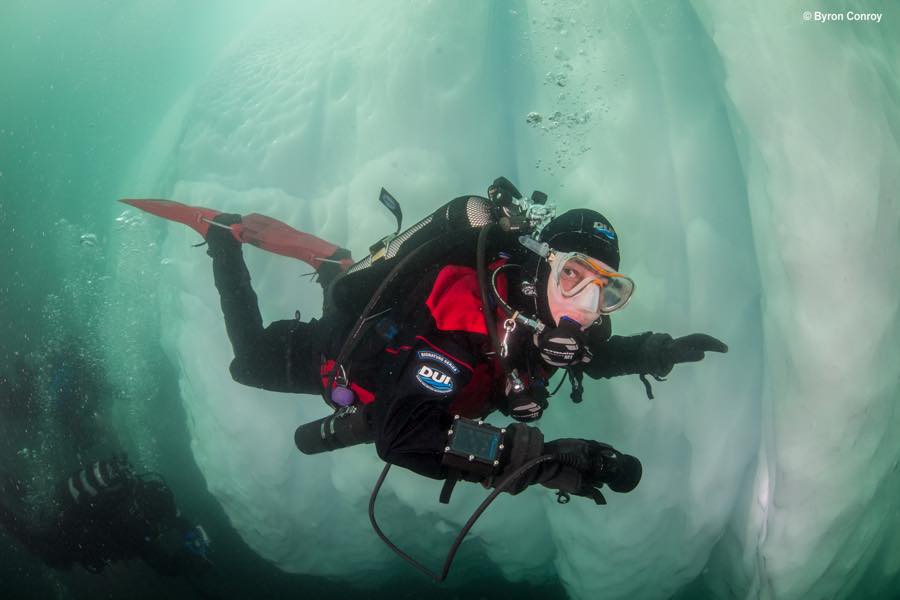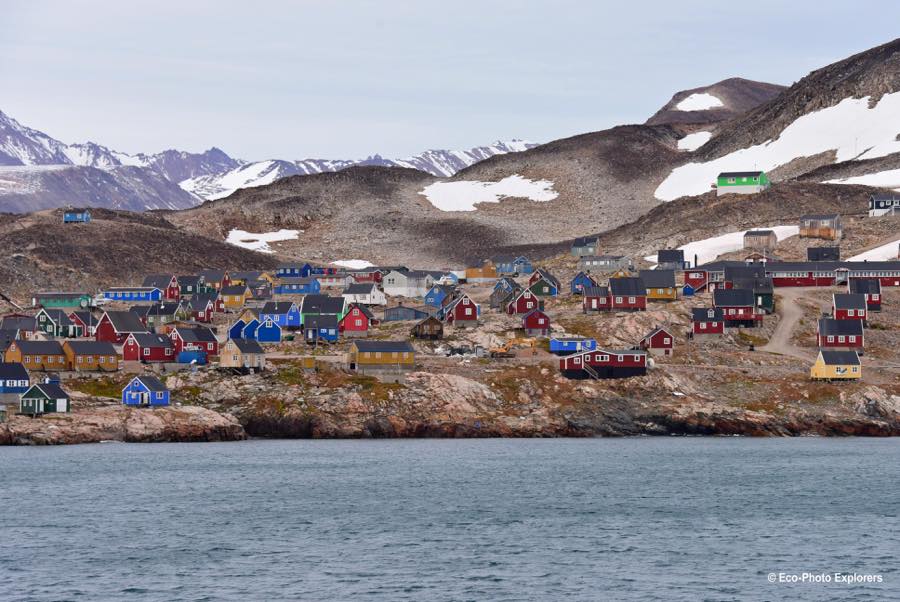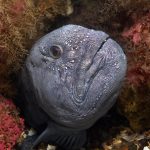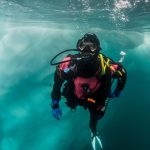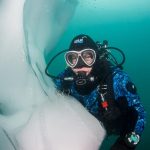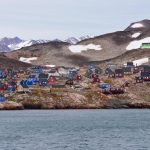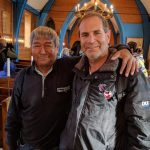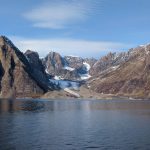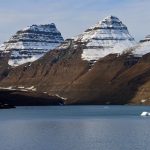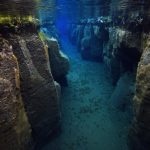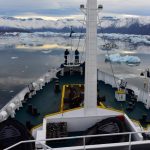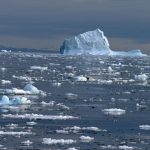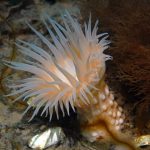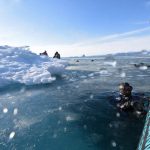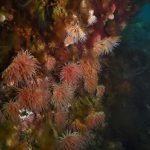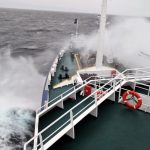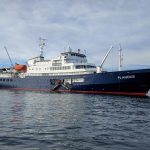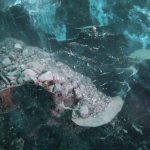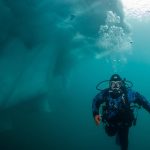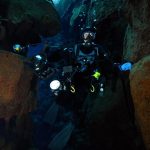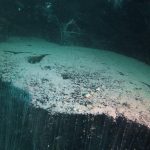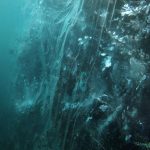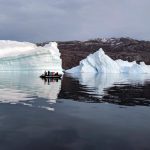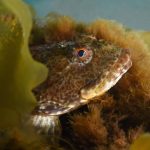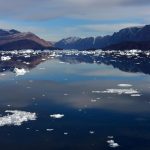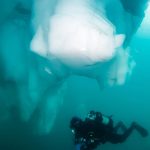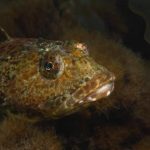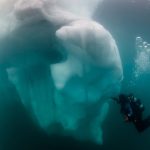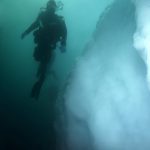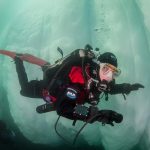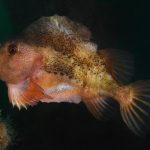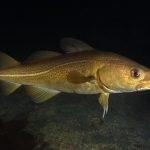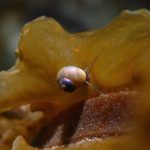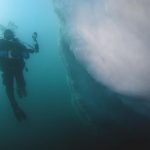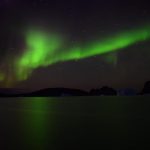The expedition vessel M/V Plancius was pointed southeast and heading into the Denmark Straight bound for Akureyri, Iceland and it was time for us to reflect on our expedition north of the Arctic Circle to the rarely visited and infrequently dived island of Greenland. As with all true exploratory expeditions, the outcomes are never certain and we had our share of unmet expectations…but the wonders of the north had captured our hearts and we departed with a sense of regret: we wanted to stay!
Words & Photos by Michael Salvarezza & Christopher P. Weaver
Additional Photography by Byron Conroy
The ship rolled lazily in a gentle swell under a serenely setting sun. This was a big difference from our experience over a week earlier as we set out for our first time towards Greenland!
The Journey Starts…In Iceland
With the expedition vessel set to leave from the north of Iceland, most members of the dive team chose to arrive early and explore the wondrous dive opportunities of this island nation. With an initial dive in the iconic Silfra geologic fissure, the dive team enjoyed a marvelous dive and simultaneously got to shake out any equipment issues, buoyancy corrections, and diving rust before proceeding to the Arctic and Greenland. Iceland has many varied dive opportunities and over the course of a week, the team explored macro dives along the shores of fjords and dove on the only diveable hydrothermal vents in the world at Strytan. Visits to hydrothermal rivers and additional geological fissures in the north rounded out an exciting start to the expedition.
As exciting as Iceland is, the real focus of this expedition was Greenland and before long we were excitedly boarding our vessel, getting settled into our cabins and casting off for a 24-hour crossing of the Denmark Straight. Our destination was Scorsby Sund, a group of dramatic fjords on the east coast of Greenland.
Becoming Bi-Polar
Leaving the shelter of the Eyjafjordur Fjord in Iceland, the Plancius confronted a 40-knot wind and 15 foot seas as it punched its way north towards the largest Island in the world. Over the course of the next day, we became accustomed to being tossed about like a bird in a storm…those that didn’t were quietly retired in their cabins maintaining a low profile! We crossed the Arctic Circle early on, and the only witnesses were those on board and the Northern Fulmers that seemed oblivious to the weather outside as they flew an aerial ballet alongside the vessel.
All crossings eventually come to an end, and before long we were suiting up under a brilliant arctic sun for our first dive at a place known as Vikingebugt in the Danmark Fjord. This dive was intended to be something of a checkout dive, and with very little marine life save for a few brittle stars and small cold-water mussels, the most memorable aspect of this initial plunge was that several members of the team became “bi-polar” with this dive, having already completed dives in the Antarctic. No official statistics are maintained on this, but Diving Unlimited International, DUI, the expedition sponsor, estimates that fewer than 1000 divers are truly bi-polar! This may or may not be true, but if nothing else, this was cause for a small celebration in the ship’s lounge that evening.
The Buoyancy Problem
After a couple more dives along rocky drop-offs in the fjords of Scorsby Sund, it was time to seek out a suitable iceberg to dive on. Icebergs litter the waterways of these fjords as the glaciers of Greenland push their ice inexorably towards the sea where they calve off, begin to float in the salt water and eventually melt and vanish. Diving on icebergs is incredibly dangerous if the right iceberg is not selected; icebergs are inherently unstable and an iceberg that breaks apart or rolls over in the sea while divers are around it can present significant problems.
We searched for a while in a place known as Jytte Havn until we found a reasonably safe looking ‘berg to dive and before long we rolled off the zodiacs into the cold water. Instantly, we were transfixed. Below the water line is where most of the iceberg exists and the ice formations, smoothed by untold weeks or months in the sea, present an ever-changing palette of other-worldly landscapes. As we passed divers exploring the iceberg, we could literally see the smiles frozen on their faces!
There is, however, an unexpected challenge presented by this type of dive. Divers properly weighted for saltwater will find themselves sinking dramatically as they get close to the ‘bergs because of the fresh water melting off the ice. Although a real problem, we all couldn’t help laughing as we watched divers bob up and down in the water column, alternately adding and flushing air to their BCs. After some practice, the divers got it all under control!
The Crystal Iceberg
One of the icebergs we explored created an incredible buzz with the entire dive team that lasted for days afterward.
It was early afternoon and the sun was peeking in and out of high clouds as we searched amongst the multitude of icebergs in the Rypefjord area looking for a stable ‘berg to explore. After some time, we came across a fairly nondescript iceberg, one that almost had a dirty appearance on the surface as it seemed to have been stained with mixed rocks and soil on the jagged ice of the iceberg. It seemed stable and before long we were splashing into the water alongside this “dirty iceberg”.
The water was murky and it took a moment to focus our eyes as we searched for the underside of the iceberg. Slowly at first, and then more abruptly, the stunning image of this iceberg’s underside came into view. We were instantly captivated.
This particular glacial remnant drifting in the waters of Rypefjord emerged from the murky water as a crystal palace under water. The ice was clear as glass everywhere we looked! The transparent ice gave us views into the inside of the ‘berg itself. Trapped deep inside the crystalline glass were rocks, silt and dirt obviously caught in the glacier’s traverse across the Greenland landscape. There were shelves of glassy ice with piles of rock and stones resting on them as if they were part of an elaborate table setting. And, as the ice slowly melted in the surrounding salt water, waterfalls of silt could be seen cascading down the interior walls of the glass palace iceberg.
In some places, shards of glassy ice jutted out from the main body of the iceberg, and it was both beautiful and spooky to see the wavy images of divers on the other sides of these glass walls.
We had never seen anything remotely like this and we were mesmerized by the infinitely beautiful shapes and textures of this arctic wonder. The divers who had made this dive could be heard regaling others with descriptions of this iceberg long into the night in the ship’s lounge.
Marine Life…What Marine Life?
As we continued to explore the many fjords of Scorsby Sund, we became aware that, with each passing dive, we were not seeing the marine life we anticipated. Brittle stars, sea anemones, jellyfish, copepods living on icebergs and small Arctic Sculpin seemed to be the only forms of life in these waters. Our pre-expedition fantasies had contained images of meeting Narwhales, seals and Greenland Sharks but our camera memory cards were filled only with the species listed above. We remain perplexed; the rocky bottom at each dive site was often covered with marine algae, seaweeds and kelp but we saw very few fish and no large marine animals. Is it normally this barren?
For photographers, other than the obvious wide-angle opportunities that exist around the icebergs, most dives are best viewed as macro dives and a 60mm lens is a lens that will suit these conditions perfectly.
The Pleasures and Pains of Polar Diving
Diving in the polar regions is not easy. The challenge of properly protecting yourself from the frigid temperatures (we recorded low temperatures of 32 degrees F on this trip) necessitates dry suits and all the accompanying undergarments and cold-water gear. Several divers used heating systems like the DUI Blue Heat system to provide extra warmth to their core, hands, and feet. With 1-2 dives a day, maintaining warmth is the over-arching concern.
In addition, it is important to use environmentally sealed and cold water prepared regulators to guard against free-flows and other possible malfunctions.
Our dives in Greenland ranged in depth from 25 feet to 60 feet with visibility varying between 10 feet and 30 feet. The water temperatures were coldest nearest to the icebergs but were consistently in the low 30s Fahrenheit.
The rigors of diving in the polar regions extend to getting in and out of the water. Typically, dives are done off zodiacs and divers get into their gear on these small and nimble boats once they reach the dive site. A backward roll is the preferred entry method. The tricky part is getting back into the boat after the dive…typically, divers will remove their tanks and weights and then attempt, often in an inelegant manner, to launch themselves out of the water into the boat. These maneuvers were the source of endless entertainment throughout the expedition!
The Struggles of the Inuit
With the diving program completed, we made one final landing before heading home. This was a brief visit to the Inuit village of Ittoqqortoormiit. Divers are often blessed with the opportunities to encounter other cultures and to see a world that many don’t see as they travel to far-flung dive locations. This brief encounter with the Inuit of Greenland was an example…and a sobering one. From a distance, the settlement appears as a small collection of brilliantly colored homes and small structures. But as we prepared for our landing, we learned from an Inuit expert aboard the Plancius of the trials and tribulations of the Inuit in these regions.
With very little employment opportunity, and with dwindling marine resources and prohibitions from traditional hunts of now endangered animals, the Inuit struggle to eke out an existence and to maintain their culture. Many are on government subsidies and some fall prey to alcoholism as an escape from their problems. It is a harsh life in an unforgiving environment.
Still, we very much enjoyed spending time with some residents of this village, learning their names and ages and hearing their stories, which they tell with pride. Whenever we encounter people of different cultures living in different conditions and experiencing life differently than we do, we are always struck at how similar we all are, despite our differences. All people are concerned with shelter, food, employment and providing for their families. All cultures struggle with the pace of change in the modern world. The Inuit of Greenland are on the front lines of these struggles.
Magical Desolation
Our expedition to dive the waters of Greenland infused a sense of appreciation for the magically desolate environment of this northern region. Greenland’s landscape is dominated by dramatic mountains seemingly thrust from the sea, thundering glaciers and beguiling icebergs. In the evening, the dark skies overhead are often lit up with the dancing lights of the Aurora Borealis. Greenland is home to fabled animals like the Polar Bear, Musk Ox, Seals, Arctic Hare and the Narwhale, even as these animals can be very elusive. Our dives did not reveal a plethora of marine life, but our explorations of the icebergs themselves captured our hearts. Greenland has gotten under our skin and we wish it well as the Earth’s climate warms and touches the ice that covers this vast island in the Arctic. Eventually, this ice will melt revealing untold mysteries. For now, we can only hope for the best and plan for our return.
Factfile
Getting There: Expeditions to Greenland depart from Akureyri, Iceland. Flights should be arranged to/from Iceland’s Keflavik International airport. Icelandair has regularly scheduled flights from London.
Diving and Accommodation: The M/V Plancius is a 293-foot ice-strengthened expedition vessel owned and operated by Oceanwide Expeditions. The Plancius has room for 116 passengers and Oceanwide runs several expeditions a year to Greenland, along with itineraries to Antarctica and Svalbard.
Diving in Iceland was arranged through Magma Divers, a full service PADI dive facility specializing in offering divers varied diving itineraries around all of Iceland.
When to go: Trips to Greenland are typically conducted in the late summer months to take advantage of the mildest weather. Diving in Iceland takes place year-round, with the best weather in the summer months.
- A Wolf-Fish guards her nest in Iceland
- An army of Brittle Stars covers the Greenland seafloor
- Greenland presents a fascinating wilderness that is rarely explored (Photo by Byron Conroy)
- In love with an iceberg (Photo by Byron Conroy)
- An Inuit village with its colorful cottages
- Making a new friend in the Inuit village
- The glaciers in Greenland are melting
- The Iceberg Alley
- Greenland’s vast landmass contains many dramatic mountains
- The Plancius pushes ahead
- The frozen wilderness of Greenland
- Tube Anemone on the Greenland seafloor
- Divers explore the slushy water around an iceberg
- A pair of Anemones in Greenland
- A wall of colorful anemones in Greenland
- Crossing the Denmark Straight on the way to Greenland
- The M/V Plancius is a capable expedition vessel
- Peering through the crystal clear ice of an iceberg to see trapped sediment from eons ago
- A Diver explores an iceberg (Photo by Byron Conroy)
- In Iceland, author Michael Salvarezza touches two continents in the Silfra fissure
- Rocks and debris trapped inside an iceberg and visible through its crystal clear walls
- The crystal clear ice of a rather unique iceberg
- Exploring icebergs from a zodiac
- A Sculpin peers from behind some seaweed
- The waters inside the fjords are protected and dramatic
- Divers must be careful to find the right iceberg, one that is stable and unlikely to move or break apart (Photo by Byron Conroy)
- A Sculpin lies in wait
- Author Christopher Weaver photographs the hydrothermal vents of Strytan in Iceland
- I swear, it was that big! (Photo by Byron Conroy)
- Spectacular iceberg dives can be experienced in Greenland
- Divers explore a small iceberg (Photo by Byron Conroy)
- A Spiny Lumpsucker photographed on Strytan in Iceland
- An Atlantic Cod on the Strytan dive site in Iceland
- A diver surfaces near an iceberg (Photo by Byron Conroy)
- We found some interesting macro life, like this snail on a Kelp frond
- A diver waits to be picked up by the dive crew (Photo by Byron Conroy)
- Swimming along the scalloped sides of an iceberg (Photo by Byron Conroy)
- A diver explores an iceberg with perfect buoyancy
- Buoyancy can be a problem as you approach an iceberg
- Lucky explorers will experience the northern lights over Greenland
